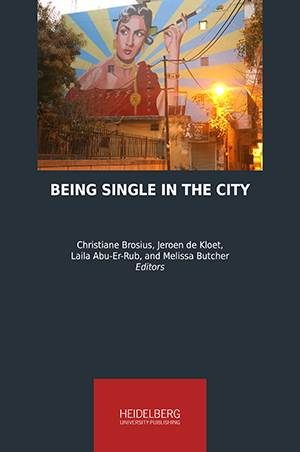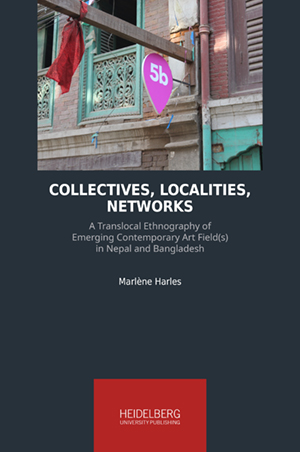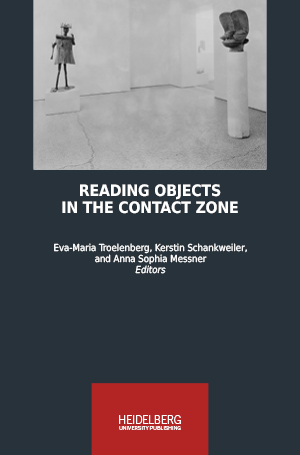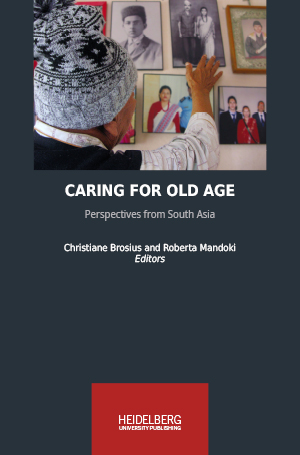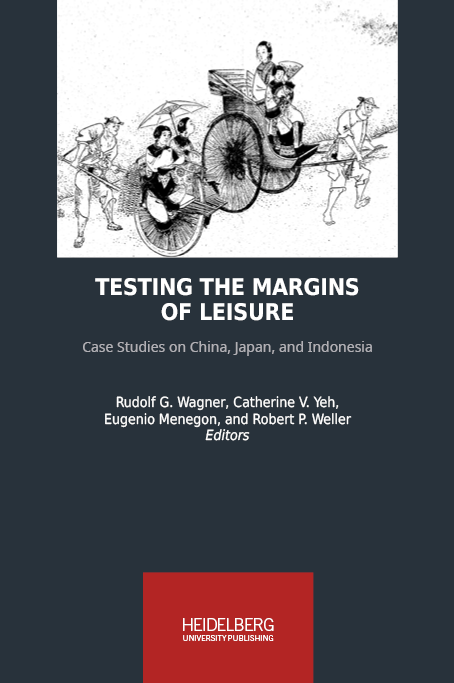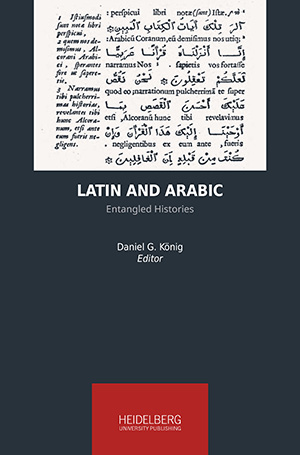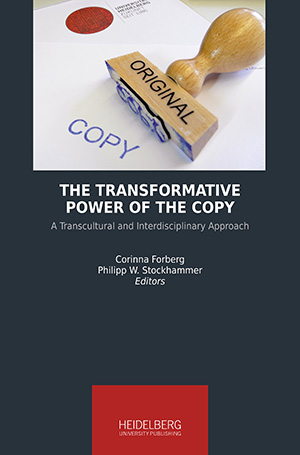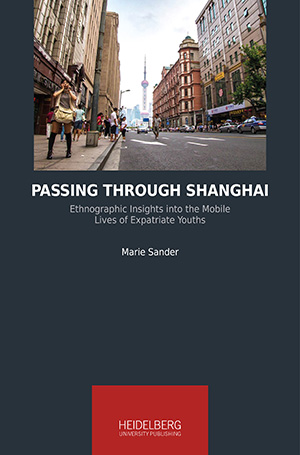Heidelberg Studies on Transculturality
Heidelberg Studies on Transculturality is committed to publishing research that investigates the dynamics of transcultural relationships in any region of the globe. The series includes works positioned both within and across disciplines. Submissions are welcome in any of the following areas: anthropology, art history, cultural and religious studies, politics, literary studies, media and communication, musicology, public health, to name some.
Transcultural research often relies on an engagement with and inclusion of diverse media (image, sound, video, etc.), all of which can be supported by our electronic end format options. Digital publishing formats are therefore well suited for monographs in transcultural studies, in view of the approach taken by most scholars within this new discipline. Researchers in this field also tend to have a strong interest in utilizing new, flexible, timely, and freely-accessible technologies which make their publications available to a global audience.
Heidelberg Studies on Transculturality
Series Editors
Reuven Amitai, Jerusalem
Christiane Brosius, Heidelberg
Beatrix Busse, Köln
Prasenjit Duara, Durham
Christian Henriot, Lyon
Madeleine Herren, Basel
Nikolas Jaspert, Heidelberg
Monica Juneja, Heidelberg
Joachim Kurtz, Heidelberg
Thomas Maissen, Paris
Joseph Maran, Heidelberg
Axel Michaels, Heidelberg
Barbara Mittler, Heidelberg
Sumathi Ramaswamy, Durham
Rudolf Wagner (†), Heidelberg
Roland Wenzlhuemer, München
Heidelberg Centre for Transcultural Studies (HCTS)
Published so far
Being Single in the City: Cultural Geographies of Gendered Urban Space in Asia
What does it mean to be a single woman in India or China? Being single is an advancing trend, also in Asia. There is an ambivalent fascination with the single woman as a new type of empowered, pleasure-seeking, competent lifestyle-surfer, and dedicated career-maker. And yet, the single woman is also stigmatized and isolated, discriminated against or stereotyped as someone who challenges social norms. Place matters for singlehood. This book focuses on the urban fabric of India, mainland China, and Hong Kong. For it is here that social, economic, cultural, and political transformations become manifest and new possibilities of living are tested and vividly contested.
Collectives, Localities, Networks: A Translocal Ethnography of Emerging Contemporary Art Field(s) in Nepal and Bangladesh
Artist collectives emerge as driving forces in the art field. They activate new spaces as locales of artistic practice and display. They shape emerging formats, from neighborhood arts projects to largescale biennials. In their practice, the artists challenge established notions of art as well as hegemonic circumscriptions of locality. This book results from a long-term engagement with artists in Nepal and Bangladesh and follows an actor-centered approach to unravel notions of contemporaneity and collectivity. Its focus on collaborative art practices together with its multi-scalar and translocal perspective urges us to rethink the use of terms such as the city, the region or the global that often transport hierarchies.
Reading Objects in the Contact Zone
The cultural effects of globalization constitute one of the most important challenges for the discipline of art history today. The aim of this publication is to take a critical look at art historical narratives. Based on transcultural object biographies, the volume brings together analyses of objects and images that circulate in transcultural contact zones: their histories of origin, circulation and perception slice through space and time. The histories of these objects and images thus demonstrate in exemplary fashion how knowledge and understanding can be generated, communicated or also challenged in cultural contact zones. Hence, the publication is designed as a methodological contribution to a transcultural art and cultural history. It is also conceived as an instrument for teaching and contains a critical-discursive glossary of key-terms that combines theory and practice of transcultural art history.
Caring for Old Age: Perspectives from South Asia
Many societies are experiencing growing longevity and population ageing simultaneously with increasing urbanization and mobilities. Such fundamental demographic and structural shifts have been reflected in a multitude of narratives and strategies how to “age well” in view of rapidly transforming environments, mobilities of people and changing social relations. This volume explores the transcultural dimensions of ageing and care through close-up ethnographic and literary case studies in South Asia, as well as one European case study from a South Asian researcher’s view. By critically engaging with Eurocentric aspects in ageing studies, the eleven contributions of this volume highlight how perspectives from the Global South shed light on transcultural entanglements and connectivities of experiences of care and ageing.
Taming the Poisonous: Mercury, Toxicity, and Safety in Tibetan Medical Practice
This rich ethnographic and socio-historical account uncovers how toxicity and safety are expressed transculturally in a globalizing world. For the first time, it unpacks the “pharmaceutical nexus” of mercury in Tibetan medicine (Sowa Rigpa) where, since the thirteenth century, it has mainly been used in the form of tsotel. Tsotel, an organometallic mercury sulfide compound, is added in small amounts to specific medicines to enhance the potency of other ingredients. In concordance with tantric Buddhist ideas, Tibetan medical practitioners confront and tame poisonous substances, and instead of avoiding or expelling them, transform them into potent medicines and elixirs.
Recently, the UN Environment Programme’s global ban on mercury, the Minamata Convention, has sparked debates on the use of mercury in Asian medicines. As Asian medical traditions increasingly intersect with biomedical science and technology, what is at stake when Tibetan medical practitioners in India and Nepal, researchers, and regulators negotiate mercury’s toxicity and safety? Who determines what is “toxic” and what is “safe,” and how? What does this mean for the future of traditional Asian medical and pharmaceutical practices?
Testing the Margins of Leisure: Case Studies on China, Japan, and Indonesia
This volume offers eight studies on different historical and present-day aspects of leisure in Asia. It critically engages with the predominant Eurocentric focus of leisure studies, bringing into the discussion a number of crucial issues such as the role of leisure as a transcultural contact zone. The volume engages with a field that has been rapidly growing due to the heightened role of leisure activities in defining a person’s identity, the fading of the work/leisure divide in the post-industrial age, and the increasing economic importance of leisure pursuits such as tourism. Bringing Asia into the discussion contributes in resetting the study of leisure into a truly global context.
Latin and Arabic: Entangled Histories
As linguistic systems comprising a large variety of written and oral registers including derivate “languages” and “dialects,” Latin and Arabic have been of paramount importance for the history of the Euromediterranean since Antiquity. Moreover, due to their long-term function as languages of administration, intellectual activity, and religion, they are often regarded as cultural markers of Europe and the (Arabic-)Islamic sphere respectively. This volume explores the many dimensions and ramifications of Latin-Arabic entanglement both from macro-historical as well as from micro-historical perspectives. Visions of history marked by the binary opposition of “Islam” and “the West” tend to ignore these important facets of Euromediterranean entanglement, as do historical studies that explain complex transcultural processes without giving attention to their linguistic dimension.
Religion and Aesthetic Experience: Drama—Sermons—Literature
Religious aesthetics have gained increasing importance over the past few years in the fields of Religious studies and Islamic studies. This volume highlights the transcultural dimensions of the theoretical foundations of religious aesthetics. It explores aesthetic experience in the religious field through a series of case studies. These include Islamic sermons from the Middle East and South Asia, Islamic religious chanting, a chapter of the Qurʾān, a German performance artist, Indian rasa theory, and Arabic and Bengali literature. Together, the authors demonstrate that the analysis of the aesthetic forms of religious mediation across regions and genres is a fruitful approach to transcultural studies.
Transcultural Encounters in the Himalayan Borderlands: Kalimpong as a “Contact Zone”
This collaborative study investigates the hill station of Kalimpong and the larger Eastern Himalayan borderlands as a paradigmatic case of a “contact zone.” In the colonial and early post-colonial era, this space enabled a variety of encounters: between (British) India, Tibet, and China, but also Nepal and Bhutan; between Christian mission and Himalayan religions; between global flows of money and information and local markets and practices. Using a plethora of local and global historical sources, the contributing essays follow the pathways of people from diverse cultural backgrounds and investigate the new forms of knowledge and practice that resulted from their encounters and their shifting power relations. The volume provides not only a nuanced historiography of Kalimpong and its adjacent areas, but also a conceptual model for studying transcultural processes in borderland spaces and their colonial and post-colonial dynamics.
The Transformative Power of the Copy: A Transcultural and Interdisciplinary Approach
This volume offers a fresh perspective on the copy and the practice of copying, two topics that, while the focus of much academic discussion in recent decades, have been underrepresented in the discourse on transculturality. Here, experts from a wide range of academic disciplines present their views on the copy from a transcultural perspective, seeking not to define the copy uniformly, but to reveal its dynamic and transformative power. The copy and the practice of copying are thus presented as constituents of transculturality via thought-provoking contributions on topics spanning time periods from antiquity to the present, and regions from Asia to Europe. In so doing, these contributions aim to create the basis for a novel, interdisciplinary discourse on the copy and its transcultural impact throughout history.
Passing Through Shanghai: Ethnographic Insights into the Mobile Lives of Expatriate Youths
Passing Through Shanghai examines how children experience international mobility. Focusing on a specific yet diverse group of expatriate youths in contemporary Shanghai, the book investigates how children negotiate cultural identity when they are subject to the highly mobile and often privileged lifestyle associated with their parent’s international careers. The ethnographic fieldwork that informs the book was carried out in Shanghai from 2010 to 2012 and focused on expatriate teenagers’ everyday practices, their lives at international schools, their engagement with the city, their dreams and aspirations, as well as their questions of belonging. The book’s ethnographic approach captures the “in-between” state of moving while growing up and explores teenage practices and positionings in this transitory situation. The teenagers’ own perspectives and experiences of living in expatriate communities contribute to a larger view of the interdependence and contradictions between the aspired flexibility of twenty-first century identities and the rigidity of cultural divisions based on nationality, ethnicity, gender, and class.


